5 Driver Myths Golfers Are Still Getting Wrong – Simple Golf TipsAre you falling for one of these golf driver myths? In this video, I’m breaking down the top 5 biggest driver myths that cost golfers distance, accuracy, and consistency. From the truth about driver loft to why swinging harder might be ruining your strike, I’ll show you the facts, the fixes, and how to hit longer, straighter drives without wasting money on the wrong gear.
We’ll cover:
* Why strike location is the real distance secret
* The truth about driver loft and ball flight
* How to find your sweet spot swing speed
* What a draw driver can (and can’t) do for your slice
* Why the latest driver model isn’t always the answer.
Plus, I’ll share simple golf drills to improve your strike, boost your distance, and hit more fairways.
Whether you’re a beginner golfer or a low handicap player, understanding these myths will help you make smarter equipment choices and improve your driver performance fast.
If you’ve ever been told “just swing faster” or “loft kills distance,” this is the video you need to watch.
—–
SAVE MONEY and support the channel by using my affiliate links.
I’ve partnered with top companies to offer discounts on launch monitors, training aids, range finders, and more.
Check out all my affiliate deals here:
https://crossfieldgolf.info/Affiliate-Discounts
—–
Sign up for my FREE golf tips newsletter:
https://www.crossfieldgolf.com/
—–
Welcome to the Mark Crossfield Golf channel, your ultimate destination for all things golf! Whether you’re a beginner just learning how to swing a golf club or a seasoned golfer aiming to refine your golf swing, this channel is here to help you master every aspect of your golf swing. With a blend of expert golf instruction, golf tips, practical golf lessons and honest equipment reviews, Mark Crossfield provides you with everything you need to play your best golf.
At Mark Crossfield Golf, we know that mastering your golf swing and perfecting your golf grip are fundamental to becoming a better golfer. Our videos dive deep into the essentials of a solid golf swing, teaching you how to swing a golf club with precision and power. From golf swing basics to advanced golf swing drills and techniques, we cover it all.
Our channel offers a wide range of golf lessons tailored to golfers of all skill levels. If you’re new to the game, our beginner golf content will guide you through the fundamentals, including the golf grip, golf stance, and how to execute a consistent golf swing. For more experienced players, we provide advanced golf lessons on topics like ball striking and perfecting your golf swing. Each golf lesson is designed to be practical and actionable, so you can apply what you learn directly on the golf course and start seeing results.
Choosing the right equipment is crucial for any golfer. We provide thorough reviews of the best drivers and best irons to help you make informed decisions. Whether you’re searching for the best drivers for beginners or looking for high-performance golf clubs that can take your game to the next level, our reviews cover all the top options.
Every golfer knows that small adjustments can make a big difference. Our channel offers a wealth of golf swing tips designed to help you improve every part of your golf game. Learn how to hit the driver straight, avoid common mistakes, and develop a strategy for better golf shots. We provide detailed advice on mastering your short game and putting, ensuring you’re equipped with the skills needed to lower your scores.
Understanding the mechanics of your golf swing is key to improvement. Our slow motion golf swing analysis breaks down each part of the swing, helping you identify areas for refinement. By performing slow motion golf swing analysis, you can make precise adjustments that lead to more consistent and powerful golf shots.
At Mark Crossfield Golf, we believe in building a community of passionate golfers. Join us as we explore every aspect of golf, from golf swing basics to golf lessons for advanced players. We encourage you to leave comments, ask questions, and share your experiences. Our community is all about learning, growing, and enjoying the game of golf together. By engaging with our content, you’ll gain access to the best golf tips, golf lessons, golf swing advice and equipment reviews available.
Don’t miss out on the latest videos designed to help you improve your golf swing. By subscribing to our channel, you’ll receive regular updates on new golf tips, golf lessons, golf swing drills, and equipment reviews. Whether you want to refine your golf swing, find the best drivers, or just enjoy quality golf instruction, Mark Crossfield Golf Coaching has everything you need to play better golf and have more fun on the golf course.
Are you falling for one of these golf driver myths? The kind that promises you more distance, straighter shots, or gamechanging performance, but they actually hurt your swing or worse, your wallet. In this video, I’m breaking down the top five driver myths that too many golfers still believe. From swinging harder to chasing the latest models, and I’ll show you why this might be hurting you. I will show you why the truth might surprise you and what to do about it instead. Let’s stop wasting shots. wasting money. Let’s get stuck in. At last, the sacred weapon of golf legend forged into titanium destined to fix slices, toe strikes, and broken dreams. Or maybe not. The actual first place to start with a driver is strike. Can you control it? Do you actually practice it? That’s a question for you in the comments. So many of you don’t. Do you actually practice where you strike the ball on the face? If you don’t, you need to start adding it to every practice session. Really simple way of doing this. First question, I’m going to hit a shot here. And can I feel here where I struck it? I can I can even see by the shot. It’s like low. It’s cutting a little bit more. That was slightly down here. So low and a bit on the heel. So I can feel that, hear that. So, what I’m going to do on the next one, I’m going to try and hit a little bit more towards the toe end. I’m going to literally try and shift my strike from that position. It’s a bit high, but it was certainly more in the middle of the club. And you see how the curvature now takes it more towards the line. So, my path numbers and face give me the cut, which I want to play. And the strike, even though being a bit high, this is why it launched a bit high. So, 15 degree launch, my higher tolerance, it was pretty middle. I shifted strike. Now, I did that in a really subtle moves as I come down and to hit the ball. Now, nothing really big changed in the way I moved. I literally tried to deliver the club a few more millimeters towards me to move strike away from heel and a bit more into the middle. Meaning, when I got down by the ball, I’m moving from where I just delivered without thinking to slightly the other side. So, millimeters towards me. I’m bringing my hands in like a millimeter or two towards me to move that club. The reason I can do that is a I’ve practiced it and b I can feel where I strike on the face. Now lots of you can’t. So really simple way of practicing this. Just wet the face with your finger. So I’ve just got a slightly damp face and dries pretty quick. Then I’m going to hit my shot. Oh, that was low. So hopefully the camera is picking that up. It’s basically there. You can see the dimples in that slight damp face. So this will show you where to strike and then in turn now how you have to move it. And you can do this with every shot l before you hit it with a dry face. Just slightly wet it. Bang. Hit and then adjust accordingly. Now some things you can do to try and adjust strike if you’re not that good at striking or adjusting strike. Check how distance kind of reach you are away from the ball or how close you are. how high your hands are and how low they are. These are all things you could test and check to see what creates your best strike because what you’re gonna find, we see someone like Bryson, you might want to stand up here. He strikes it pretty good. We’ll see a more kind of standard golfer like your Rory would be more here. Good rule of thumb for you, get your hands underneath your chin with your driver. This is a good place to start. Other things you can test, ball position long way forward will affect the strike. ball position a long way back would affect where I strike on the face. So moving that ball position around a little bit also could help you really learn to control where you hit the ball on the face. But the biggest skill would be about trying to actually feel as you come down. Not that you’re throwing the club in different directions. Everything’s coming on the same direction, but rather than coming down on X, can you come down a fraction closer to you with your hands? It’s such a small millimeter move to try and change where you strike the ball in the face, hopefully get you hitting some more fairways. Driver myth number two, more loft on your driver means less distance. Making sure you get a good custom fit that suits your delivery numbers. Now, I’m using the SkyRack software here, and we’ve got a green, amber, red light system. So, you can see the 12 is my launch. It’s giving me a range between 12 and 14°. Spin 28. It wants me 22 to 27. It’s giving me an attack angle range as well. So, it’s working out subject to the speed. So, I’m not warm. 108 club head speed. So, if I was to swing, say down at these speeds here. You can see that ball dipping out the air, not flying very far. We’re now hitting reds on everything. So, the launch angle wasn’t enough. I swung at 82 mph. I carried the ball 150 yards. Like lots of golfers watching are doing these kind of numbers. And if you just think reducing loft is the answer for more distance. Lots do. It’s absolutely not true. So if I try that again, 82 mph. So I’ve hit that one. Definitely carried a bit further. So I swung at 78 miles an hour. I carried 161. So, I carried it further and you see I’m starting to amber now. Not quite high enough launch, not quite enough spin for that club. But what I did there is I added loft. So, I’m doing it via swing to try and get the most out of the club rather than you would be doing it with custom fits. Now, that one’s noticeably further. So, did I swing way faster or did I just get better angles? 84. So, similar to that first one, 15 launch, 27 spin, we’re now 286. This is your DNA. This is your license to hit better shots. These things need a bit of help professionally from good fitters. Ideally, people who teach you as well. In my opinion, the best fitters are coaches, not dedicated fitters, because they can see the potential in your movement changes. Because what happens is you’re going to find if you do make a big movement change is that those angles, if I do those angles with more speed, they are not going to work. They are literally going to be not correct angles. I did hit that little bit at the bottom. So, we got a lot of red going on there because the swing I used at that speed doesn’t work. It just produces awful numbers. Now, do I want to fit around that swing? Some people might, some people don’t. A good fitter is going to be someone who teaches you and they are going to see a lot of potential or less potential in change subject to what you bring to the table and how resistant or not you are to change. And they would be able to tell you a when to get fit and b what fits might grow with you as your swing develops. If I can just swing hard enough, maybe the ball will it just explode off the face. Nailed it. Finding that sweet spot when it comes to speed is so crucial. So, I can find my top end swing speed, which won’t happen here because I’m not warm, but that’s me at this stage trying to swing top end. And I swung that club at 115 miles an hour, which for me is very fast and warm. I’m going to hit another one like that. But I only had a 1.43 smash, meaning hitting the middle of the bat isn’t that easy when I’m making those kind of movements. Oh, I am hitting grid though. Good. 115 club. So carrying it 280 yards, which is nice. Total 294. But to me, that feels kind of ungameable. Apart from some situations, I’m not going to hit the sweet spot that much where I feel swinging at that speed. I’m going to hit the center of the bat a lot more often and feel like I could actually get round a whole range of courses. It’s 112. It’s way slower. Obviously, that jumps up as I get faster and going, but it’s still totally 280 carrying 264. Not warm. ball speed slightly down, but it’s efficient and it’s somewhere I can start from and move up to those higher ranges. Most people I teach, most people I see having fits, they bring inefficiencies. They bring deflective blows. So, energy loss, club coming across the ball, too much loft, poor strikes. They’re not able to bring everything ever together to max out what they put in. So what they then start doing is they just bring loads of speed to that chaos. The more efficient you can get at controlling that strike that we talked about earlier. Things like path, things like loft and swing at your sweet spot speed. So you’ll have your sweet spot speed, you can have a slow speed, you could have a higher, which all work on the golf course. If I want to just like donk one down there, I’ve got my little slow patty one which is just going to find something down there cuz I didn’t want to hit my 3-wood. So carry in 230. I have my Hulk smash fast one. Again, it’s towed. It’s not going to make the distance. The ball speed will just drop subject to the club head speed. So 114 for 160 ball. So 114 club for 160 ball. slow ball speed because it’s mish hit and then I’ll have kind of my fastest that I feel like a game with consistency which is going to give me better quality of strikes. Ah, it’s a little bit cuddy but I’m going to find it up the right rough. Find your sweet spot. Move around for them but find that sweet spot. Strike and consistency of delivery is going to give you the distance you need. This driver, it guarantees you will never slice again. Never again. [Music] Okay, maybe not guaranteed. So, draw drivers definitely can reduce curvature, but very rarely are they going to turn someone who fades it in to someone who draws it. easiest way for you to control basically club path, which is what is controlling part of controlling the curvature that you’re trying to beat with your jaw driver, is this really simple little hack in a down swing. Simply think of two movements and how they relate to each other. So, think of rotation as moving hands and club out. So, out over the ball. So, my hands are behind my head. If I rotate, see how my hands are now in front of me. They go more out towards the ball. This is what people who come over the top tend to do. And then think lateral shift or slide, so this way as ways of getting up to the ball this way. So you could strike it, but it doesn’t move the club or the hands out towards the ball. Now, think about those two ideas. If I make swings that have a lot of slide, not much rotation in the down swing, ball starts over there. Path is mega from the inside. So that was built around just huge amounts of slide. There was obviously rotation otherwise the hand wouldn’t get out to the ball and the club wouldn’t get out. But it was very late. And then if I do ones that’s just more rotation and take slide away. I think you get where the pattern of this is going. That’s going left and slice it back very low. Path goes way left. I tend to hit down at that as well. So you have your jaw driver and you’re trying to save curvature. You can save curvature. Switch the way you curve by thinking just simply of more lateral, less rotation in that down swing. So feeling like you’re just coming across to the ball, then letting your arms drop down to just let them turn out to the ball at the end. So think more of a shift then a turn. See, it’s giving it more of that straight path, a little bit of draw. Having that knowledge, rotation moves out, slide will get you over to the ball and drop your arms down and turn out to it is such a bigger weapon against the curvature you’re spending money on to try and stop, which doesn’t really stop the curvature. And the final tip, remember to subscribe if you’re not subscribed already. Hit that like button as well. Really helps the video out. This baby dropped last week. 17 yards extra distance. This is going to be game over, boys. [Music] What’s that old thing? Got just secondhand. Got it secondhand. This bit from swing. Seems really nice. wasn’t right to me at all. If you want to spend money on the latest and greatest, fine. But if you want to see actual improvements, I see noticeable huge improvements with everyday golfers when you just deal with basic setups. So, how they set up to the ball and nailing that in every time. So, quick overview of setup with the driver for you. Let’s get that ball position somewhere between that heel, lead heel to middle of the foot to just inside anywhere in that region. Then I want you to try and make sure that your width for stance is around shoulders width. I also want you to make sure that you’re bending forward about 40° with your body. So that’s leaning forward with a little bit of knee flex. Then we want the lead foot turned out around 15°, trail foot turned out around 5°. So your feet are more orientated this way than they are this way. That is one of the most common issues I see in setup over and over again in that setup. When you’re holding on to the club, make sure your hands are underneath your chin with that 40° of bend. This is another big one, the big old reach people struggle with, which encourages more rotation to get out to the ball, which is a common one. And then the last one, just feel like your body is somewhere parallelish to that ball, the target line. see lots of people with closed shoulders, open feet, closed feet, open shoulders, trying to get some kind of sync. We actually see from world class players a little bit more of an orientation to an open setup with hips and shoulders because think about it, they’re going to turn this way on the back swing. So, they tend to have a little bit of move this way to turn, but thinking that you’re relatively lined up is a really good benchmark to get that driver working. How many lessons do you think I’ve done with everyday golfers where they tick all that list off? They just tick that list off. I would say less than 1% where you look at a setup and think, “Cool, that’s dialed in.” Good players, you get that from everyday amateurs, you never do. If you want to make those gains with your driver, keeping that setup tidy and neat and being really relentless with it every time you play in practice is going to save you more shots than the latest driver that’s not really improved than the one before. Now, if you want to find out how far you should be hitting your driver, this will tell you how to do that. Remember to subscribe if you’re not already and like the video.

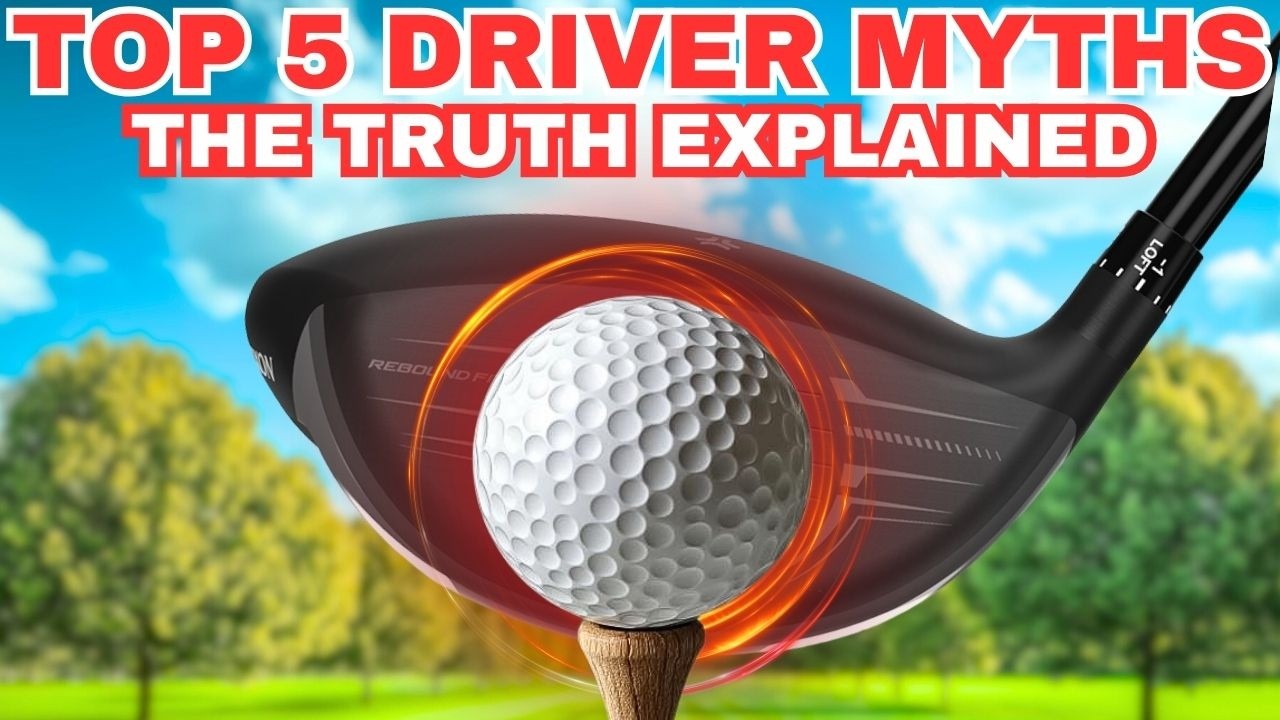
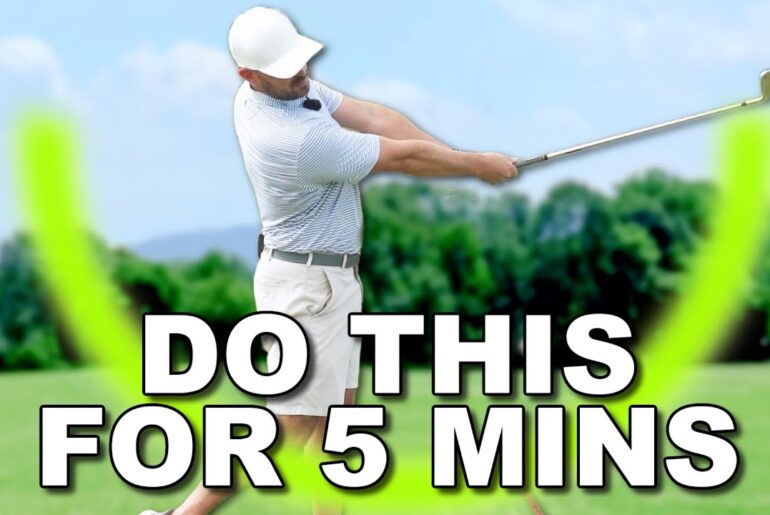
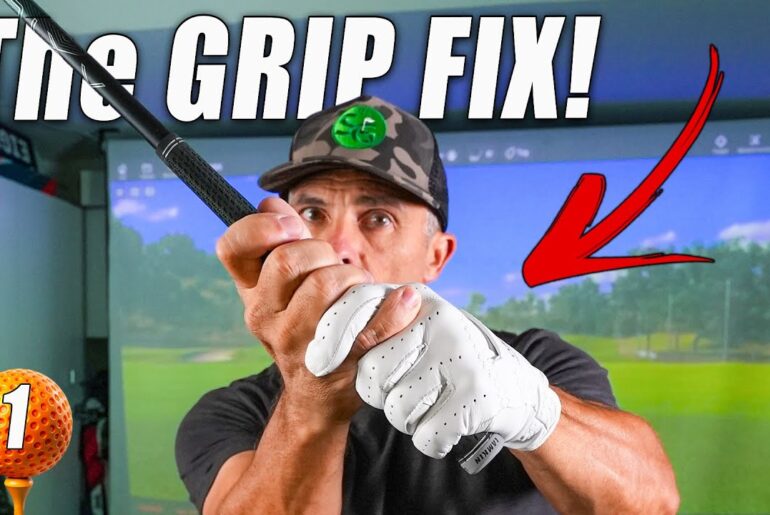
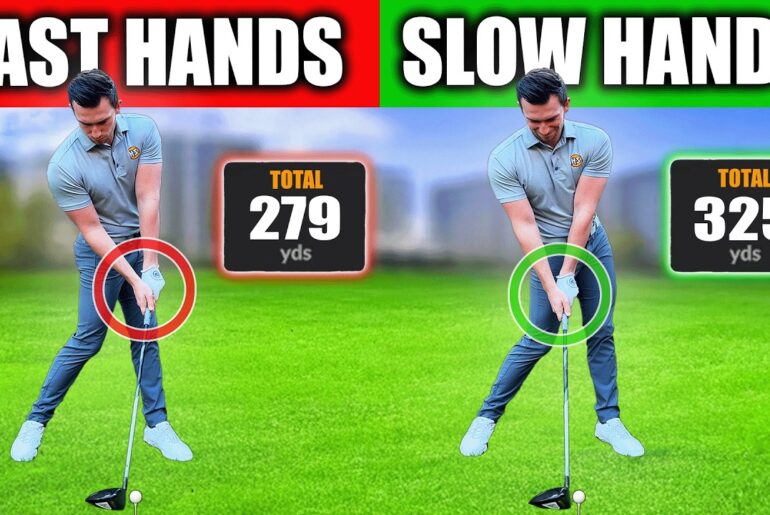
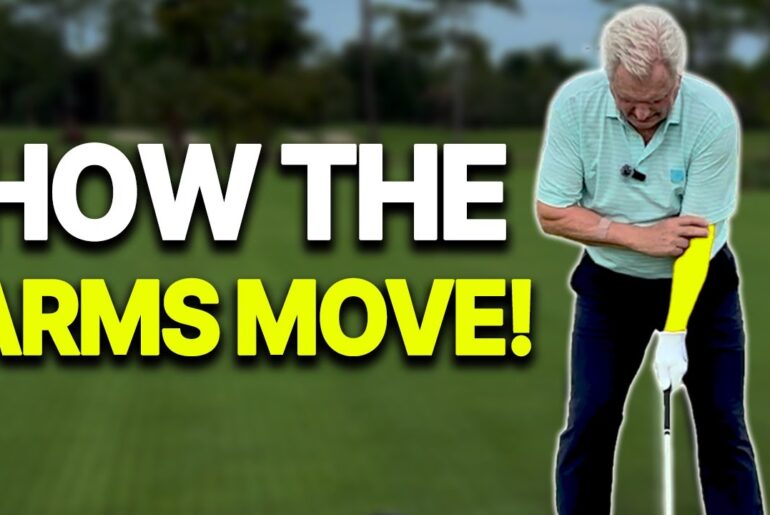

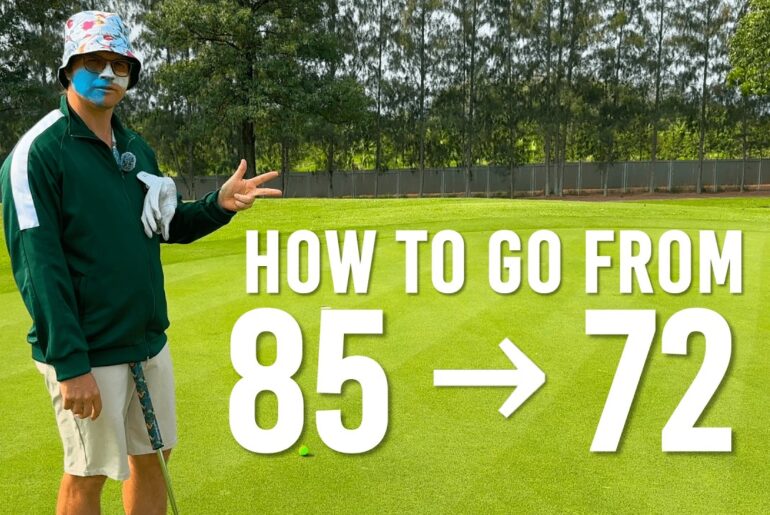
12 Comments
What is the driver myth you have fallen fall?
Taylor made promised me 17more yards with the RBZ.
Still waiting for it. 😂
Suggestions on a driver that helps me find my golf ball in the off chance it lands in the middle of the fairway?
There are sooooo many videos out there telling you hit driver a certain way. This video tells you what to potentially change and how to manage it.
yes
Love this! Also, a few questions / topics that I would love to see you dive into if you find them interesting?
First… When attempting to add POWER!!! My brain REALLY wants to hit the ball with my trail side, which means the top goes first and rotates as you showed in this video. I can do a proper sequence when I am not trying to get power, but I am doing swing speed training and trying to take the gains I'm getting into my actual driver swing (because… what's the point if it doesn't :). It's 100% mental! What kind of drills would you recommend to re-wire ones brain so that when we want POWER, we think / feel the proper sequence using the legs first as opposed to hitting with the trail side and rotating first?
Second… I practice at a Top Tracer equipped facility where I can hit off grass (it's not Top Golf, but it's the same system). Trackman also has their range solution, so more ranges are popping up with the ability to give some stats. The biggest downside is that there are no spin numbers due to the nature of the tech. There's ball speed, launch angle, curvature, decent angle, carry distance, total distance, and apex height. Do you have some suggestions on how to use ONLY these stats to fit one's self to their driver? And by fit I mean able to make swing changes OR adjustable driver tweaks.
Third… A discovery I made that you'll find interesting. I'm in Dallas, Texas where it gets pretty hot. That of course means a lot of sweat that drips down into the glove on the range! I started to notice how loose fitting my glove would become over the course of a session from this, where by the end of the session the club could easily wiggle in my hands a bit from this (the glove material is shifting). This would affect strike quality as the club is no longer stable in my grip due to this shifting around. So I started using 2 gloves that I switch back and forth between during a session and it's made a remarkable improvement. I hit about 20 balls with one, take it off and hang it to dry while I hit 20 with the other glove (rinse and repeat).
These videos confuse me. Quad with skytrak display ???
Oh come on…we all know a new driver MIGHT be the answer…assuming the question is "Is it fun to buy new golf things?"
I am relatively new to golf – I am still at a point where I really only try the driver when practicing. I can currently hit a 3W about as far as the driver, but with more accuracy. Until I can get some benefit (more distance) from the driver, I would still be inclined to leave the thing in the bag.
I had to google "draw driver". Hadn't heard of that before.
slide VS rotation – great tip
None of them yet……but I'm working on it!
oooooh, I love driver myths 🙂 Strike is King! Loft is your friend and Set up something you should never fail (I'll widen that to preshot routine)